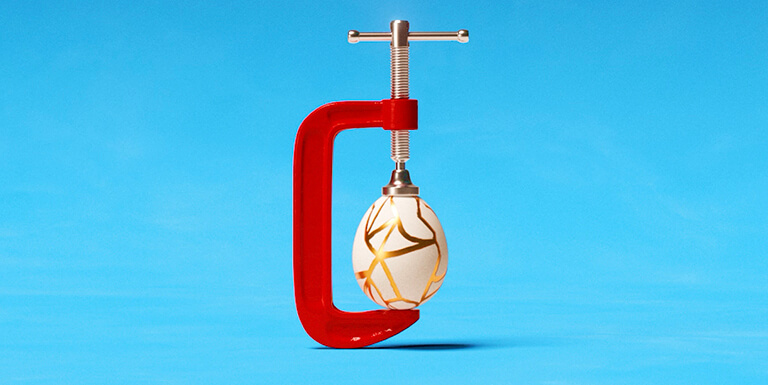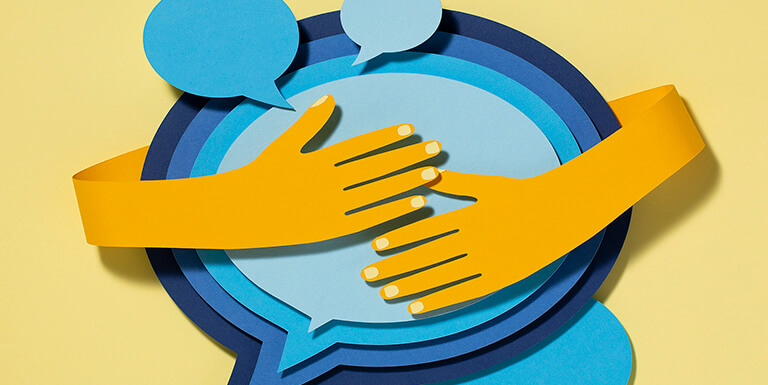
Satya Nadella has made it a hallmark of the culture at Microsoft to seek a “growth mindset.” Organizations thrive, he says, when employees embrace continuous learning, rather than assume they are naturally good at some things and inevitably bad at others (a “fixed mindset”). As he has explained it, in a culture that prioritizes curiosity over innate brilliance, “the learn-it-all does better than the know-it-all.”
And with the workplace upended by COVID-19, it’s become clear that the mental game is more important than ever. At Microsoft’s “The New Future of Work” symposium last summer, researchers from the University of Zurich presented a study showing that employees who adopt a fixed mindset around remote work (“I’m just not someone who’s good at remote work”) experienced more negative emotions and lesser perceived productivity than those who held a growth mindset (“I can get better at this”).
But while a lot of research has been done about how organizations can encourage growth mindsets—including nurturing learning and creating opportunities for experimentation that allow for failure—tips for how individuals can shift their mindset are harder to come by.
As it turns out, there is another arena where mindset plays a particularly powerful role: athletics. Becoming a top-performing basketball or tennis player is as much a mental game as a physical achievement.
“How do you get yourself into a growth mindset? Think like an elite athlete.”
To see what we might be able to learn from athletes about opening our minds, WorkLab reached out to Ryan Flaherty, a senior director of performance at Nike. Flaherty has spent some 15 years working with world-class athletes and data-driven neuroscientists, developing evidence of all the ways that Wimbledon champs and NBA greats use their minds to get the most out of their bodies.
“We can train the brain just like we train the body,” says Flaherty, who holds a bachelor’s degree in human movement science from Utah State.
So, how do you get yourself into a growth mindset when the pandemic has turned schedules and routines on their ear? Think like an elite athlete.
Tip 1: Find your purpose.
Or as Flaherty asks every client, “What’s your 68?” It’s his own shorthand for the profound sense of purpose that drives all great performances, a reference to Czech-born hockey legend Jaromír Jágr, who wore a now-iconic “68” on his jersey throughout his decades-long NHL career. As Flaherty tells it, when the underdog Czech national hockey team squared off against Russia for the gold medal in the 1998 Winter Olympics, Jágr rallied his teammates, explaining that he’d worked his whole life for that moment: His grandfather, an anti-communist resister, had perished in a Soviet work camp in 1968. “His dad told him, ‘You’re wearing the number 68 because anytime you feel like you’re not going to try hard, you need to remind yourself of where you come from and who sacrificed for you to have the opportunities you have,’” says Flaherty.
Not everybody has such a stirring tale to harvest or a grand stage to do it on, of course, but we can all dig for meaning to animate our daily lives. “It’s not about external factors: your job, how much money you make, the car you drive,” says Flaherty, who, having lost both his parents to cancer, finds purpose in staying healthy for his two-year-old son. It’s the mindset that shapes your approach to everything, that gets you out of bed in the morning and powers you through whatever obstacles may stand in your way. “It’s asking yourself the question: Why do you do what you do?” Keep that North Star in view.

Nike trainer Ryan Flaherty has studied the mindsets of elite athletes for over a decade.
Illustration by Jordan Andrew Carter
Tip 2: Focus on the process, not the outcome.
The most successful athletes don’t obsess over how they’ll perform in the big game—that’s in the future, an arena beyond their control. Instead, they focus on the day-to-day steps that will ready them for that moment. “The best in the world are process oriented,” says Flaherty, who has been dubbed the “savant of speed” for his ability to inspire even the fastest athletes to exceed their limits. “The outcome, the result, is based on the preparation.”
That means Seattle Seahawks superstar quarterback Russell Wilson doesn’t allow the uncertainty of next Sunday’s game (or the pressure of a four-year, $140 million contract) to intrude on his headspace. He starts with Monday, then Tuesday, chipping away at his goal. “He creates a detailed schedule, handwritten the night before in 15- to 30-minute increments, from the time he wakes up to the time he puts his head down, with every single thing he needs to do to get him ready for Sunday,” says Flaherty, who has worked closely with Wilson for years. “By executing on that schedule, it allows you to stay focused on the present moment.”
During a time that has warped everyone’s sense of time and forced many to shift to remote work, writing down daily tasks can help alleviate stress and restore a sense of control. And don’t just jot down the virtual meeting or looming deadline: Scheduling a tea break or a walk or a call with an elderly parent can make the loss of familiar patterns feel more manageable. “Focusing on the process,” Flaherty says, “eliminates the need to worry.”
Tip 3: Talk to yourself.
Top performers have a script—a phrase, a mantra—to get them through blunders and over heartbreaks. “Successful people talk to themselves; everybody else listens to themselves,” Flaherty says. His favorite line: “Be where your feet are.” It’s a reminder to stay grounded and present, to not dwell on the past or agonize about the future.
“Self-talk is about more than shaking off disappointment. It’s about silencing the drumbeat of dread and self doubt.”
Self-talk is about more than shaking off disappointment. It’s about silencing the drumbeat of dread and doubt that’s likely to fill the cerebral void in the absence of a nonjudgmental slogan. “Your brain will talk to you whether you talk to it or not,” says Flaherty. And because we’re wired for survival, for detecting threats and reacting to fears, the messages our brains naturally emit aren’t likely to be inspirational. In fact, we’re often harder on ourselves, pinpointing what we can’t do or won’t try, than we would ever be on our loved ones. “Self-talk is about talking to yourself like you would your best friend,” Flaherty says.
That quarantine 15 you vowed to lose? The long-term project you keep meaning to start but just haven’t? “Your best friend would be like, ‘I got you. Who cares? You’re still awesome,’ ” he says. So help yourself start to make progress in a supportive way. “If we could do that, we’d all treat ourselves a little bit kinder.”
Tip 4: Envision success—and failure.
You just finished your internal pep talk—now Flaherty wants you to envision everything that can go wrong. If it appears contradictory, or at least counterintuitive, it’s really just another technique for eliminating worry and building confidence. “I tell my athletes, ‘Live optimistically, but practice defensive pessimism,’ ” he says.
Take Flaherty’s work with Saquon Barkley, the New York Giants’ formidable running back. As Flaherty recalls, when he first asked Barkley if he ever practiced visualization, Barkley responded that of course he did—every night he’d close his eyes, imagine the perfect play unfolding, his offensive line forming an impenetrable wall, the defense parting, and then a beautiful, heart-pounding 100-yard sprint into the end zone. “So, I go, ‘In your career, how many times has that happened?’ ” says Flaherty. “And he was like, ‘Probably never.’ ” What Flaherty prescribed was the opposite: Visualize all the ways that same play can go wrong, so when it does go wrong, there’s no surprise. “You just react because you’ve already done it.”
“At a time of so much uncertainty about the future of work, the perspective gained from walking yourself through worrisome scenarios can actually be calming.”
At a time of so much uncertainty about the future of work—about shutdowns and reopenings in a socially distanced economy—the perspective gained from walking yourself through worrisome scenarios can actually be calming. Whether you’re merely uncomfortable about appearing on camera for a presentation or truly fretful about turmoil sweeping your industry, says Flaherty, “if you think about what you would do in every one of those situations, what you realize is that you’re OK, you’re still alive, you still have what’s most important to you.”
Tip 5: Embrace Grit.
Maybe the most potent quality the world’s best athletes share is grit. It’s an idea popularized by psychologist Angela Duckworth, a regular guest on Flaherty’s podcast Trained , whose book, Grit: The Power of Passion and Perseverance , describes how focused persistence (and not intrinsic talent) is the secret to outstanding achievement. “The top athletes all have high levels of grit,” Flaherty says. “And grittier people are more successful in almost everything in life.”
Like virtually every other habit Flaherty prescribes, grit can be practiced, developed, and increased. The trick is establishing manageable goals, where the finish line is both clear and within reach. Say, for instance, two people want to alleviate their work-from-home stress by incorporating meditation into their daily routine. One decides to start with a three-week commitment; the other vows to do it for a year. If they both stop after three weeks, they will each have done the exact same amount of meditation—but for only one will grit have improved. Especially under today’s challenging circumstances, Flaherty says, “it’s really important for people to stop trying to set such lofty, long-term lifestyle changes.” To build grit, choose short-term, time-bound goals.
“Start small,” he says, “and then focus on becoming obsessed with finishing everything you start.”

